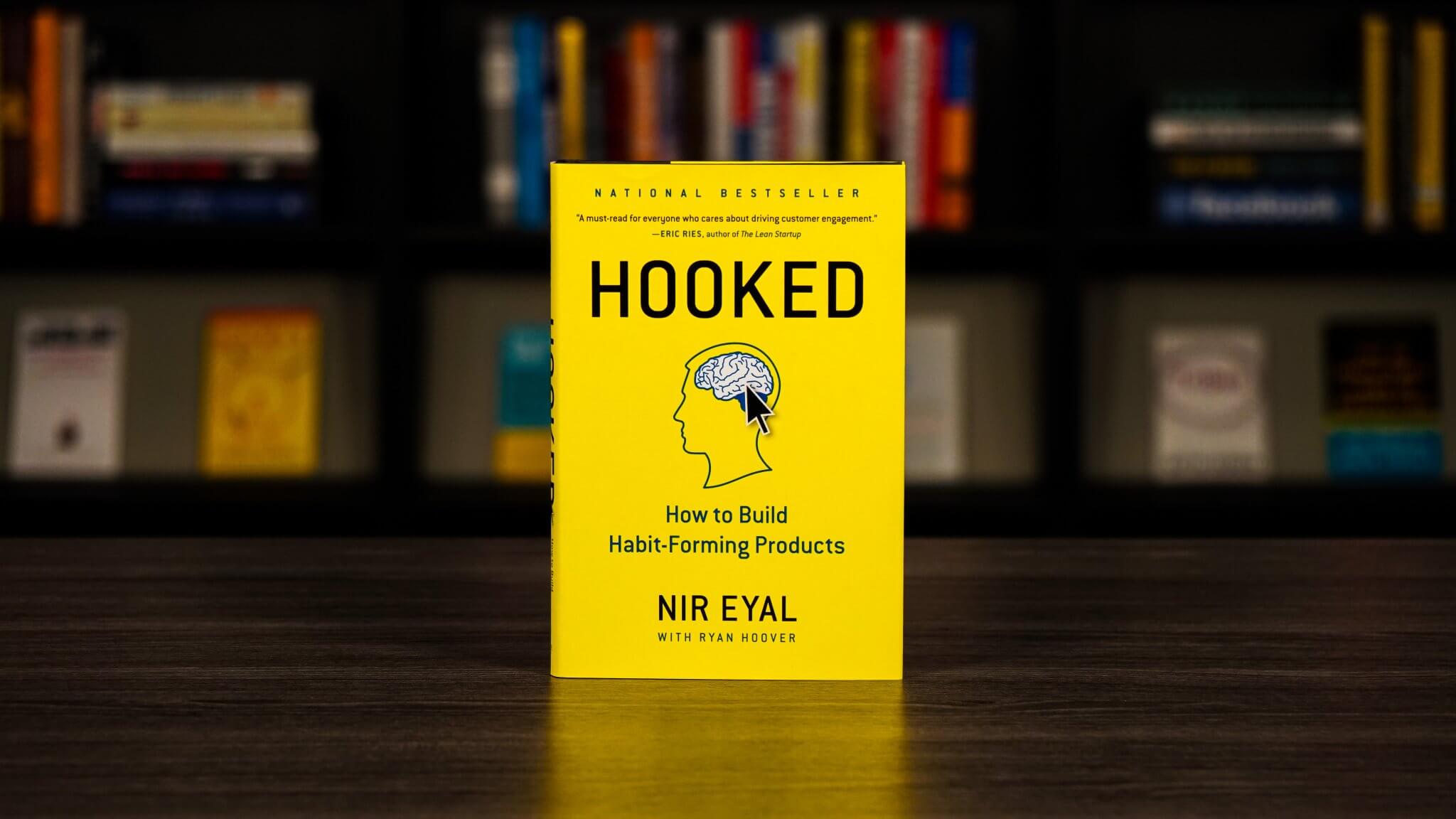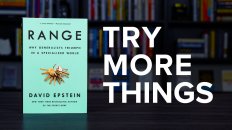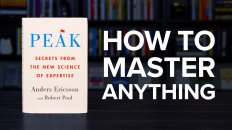Product success is often based on repeat usage from customers. But it can be expensive to keep people coming back to your brand over time. Hooked is about helping customers build habits around using your products, so they reengage with your solution automatically.
This book is for entrepreneurs, product managers, marketers, and anyone else interested in creating habit-forming products. It’s a comprehensive approach for creating unprompted engagement, so users return to a product or service over and over again.
1. Create Unprompted User Engagement With Habits
Habits are one of the ways we learn to codify complex behaviors. They form when our brains take shortcuts and stop actively deliberating over what to do in a given situation. As a result, many of our daily activities are based on routines that have helped us find resolution in the past.
Habit-forming products leverage this insight to change user behavior and create unprompted engagement. The aim is to influence customers to use our product or service, over and over, without relying on ads, promotions, or other external triggers to prompt them. Such products tend to have a higher customer lifetime value, greater pricing flexibility, and supercharged growth relative to competitors.
Companies can begin to assess the habit-forming potential of their products by analyzing two factors: (1) frequency, or how often product-related behaviors occur, and (2) perceived utility, or how often and rewarding a behavior is in the user’s mind. A behavior with enough frequency and perceived utility enters the ‘habit zone’, making it more likely to become a default behavior in the future.
The Hook Model, which is the central framework of this book, provides companies with a process for connecting a user’s problem to their own product or solution in a way that can form a habit. The model has four phases: (1) trigger, (2) action, (3) variable reward, and (4) investment.
2. External And Internal Triggers Initiate Action
Triggers are the first phase in the Hook Model. They come in two types—external and internal. External triggers tell us what to do next by placing information within our environment. Internal triggers tell us what to do next through associations stored in our memory.
Companies can utilize four types of external triggers to initiate user behavior, including:
- Paid Triggers – Such as advertising, search engine marketing, or influencers.
- Earned Triggers – Such as media coverage, viral content, or app store placement.
- Relationship Triggers – Like user invitations, referral marketing, or social alerts.
- Owned Triggers – Such as email lists, app notifications, or other opt-in alerts.
These external triggers are only the first step. The ultimate goal is to propel users into the Hook Model so that, after successive cycles, they no longer need further prompting. When users form habits, they are cued by internal triggers rather than by ongoing external triggers.
Internal triggers manifest automatically in our minds. Emotions, particularly negative ones, can greatly influence our daily routines. Feelings of boredom, loneliness, frustration, confusion, and indecisiveness often instigate a slight pain or irritation that prompts an almost mindless action or response.
Users who find a product that alleviates their pain will form strong, positive associations with the product over time. Therefore, to build a habit-forming product, designers need to understand which user emotions relate to their product and how to leverage external triggers to initiate the Hook Model.
3. Users Take Action Based On Anticipation of a Reward
Action is critical to successful habit formation. According to the Fogg Behavior Model, there are three requirements to initiate action: (1) the user must have sufficient motivation, (2) the user must have the ability to complete the desired action, and (3) a trigger must be present to initiate the action.
Motivation defines the level of desire the user has for taking the relevant action. All humans are motivated to (1) seek pleasure and avoid pain, (2) seek hope and avoid fear, and (3) seek social acceptance and avoid rejection. The right motivators create action by offering the promise of desirable outcomes.
Ability comes down to the steps required to complete an action and the user’s willingness, or capacity for completing those steps. There are six factors that influence a task’s difficulty:
- Time – How long it takes to complete an action.
- Money – The fiscal cost of taking an action.
- Physical Effort – The amount of labor involved in taking the action.
- Brain Cycles – The level of mental effort and focus required to take an action.
- Social Deviance – How socially accepted the behavior is by others.
- Non-routine – How much the action matches or disrupts existing routines.
Consider which of these six elements is having the greatest impact on preventing a user from completing a desired action. Are they short on time? Is the behavior too expensive? Is the user exhausted after a long day of work? The easier an action is to complete, the more likely a user is to do it. And then they can continue through to the next phase of the Hook Model.
As a general rule of thumb, the greatest return on investment usually comes from increasing a product’s ease of use. Increasing motivation is expensive and time consuming. Therefore, reducing the effort required to perform an action is more effective than increasing someone’s desire to do it.
4. Variable Rewards Increase User Cravings & Attention
The third step in the Hook Model is the variable reward phase. This is where we solve the user’s problem and reinforce their motivation for taking action in the previous phase. Note, what causes people to act is not the sensation they receive from the reward itself, but the need to alleviate the craving for that reward.
Also, to hold someone’s attention, products must have an ongoing degree of novelty. This is where variable rewards come into play. Without variability, rewards become predictable and stale. In contrast, novelty sparks our interest, makes us pay attention, and drives our hunger for future rewards.
Habit-forming products utilize one or more of the following three types of variable rewards:
- Tribe Rewards – The search for social rewards that make us feel accepted, attractive, important, and connected with other people.
- Hunt Rewards – The search for material resources and information.
- Self Rewards – The search for intrinsic rewards of mastery, competence, and completion.
It’s important to correctly match the right variable reward to the action from the previous phase. Such rewards must fit into the narrative of why the product is used and align with the user’s internal triggers and motivation. They must satisfy the user’s needs while leaving them hungry to re-engage.
Points, badges, and leaderboards can be effective rewards, but only if they scratch the user’s itch. When there is a mismatch between the customer’s problem and a company’s assumed solution, no amount of gamification will help spur engagement. Only by understanding what truly matters to users can a company correctly match the right variable reward to their intended behavior.
5. User Investment Leads To Increased Product Usage
The fourth step in the Hook Model is the investment phase. Unlike the action phase, which delivers immediate gratification, the investment phase is driven by a user’s anticipation of future rewards. Therefore, this step involves prompting users to put something of value into the system.
Here are five ways a user can store value within a product or service:
- Content – A growing collection of information, interactions, memories, and experiences can make a service more valuable over time.
- Data – Adding personal data into the system, either passively or actively, can make users feel more committed to a product or service over time.
- Followers – Taking time to follow the right people, and build a following for oneself, can improve a service and make it costly to leave.
- Reputation – Time invested in building a personal reputation as a buyer, seller, or member of a community can make users more likely to stick with a service.
- Skill – Once users have invested time and effort to learn how to use a product or service, they are less likely to switch to a competing product.
Note, the investment phase requires careful planning. Designers must consider whether users have the motivation and ability to make the intended investment. It’s generally best to stage the investments you want users to make into small chunks of work. Start with easy tasks and building up from there.
Also, such investments should only come after the variable reward phase. That way users are primed to reciprocate by making their first small investment into the product or service. Done properly, such investments will increase the likelihood of users passing through the Hook Model again and again.
6. Are You A Facilitator, Peddler, Entertainer, or Dealer?
The Hook Model is designed to connect a user’s problem with a designer’s solution frequently enough to form a habit. It’s a framework for serving user needs through long-term engagement. But of course, the creation of habits can be a force for positive change or for creating harmful addictions.
Therefore, we must consider the following two questions before proceeding:
- Would I use the product myself?
- Will the product help users materially improve their lives?
If you find yourself squirming as you review these questions, or needing to qualify or justify your answers, stop and be honest with yourself. It’s only by accurately addressing these questions that you can assess which of the following four categories best describe your situation:
The Dealer – Those that do not plan to use the product and do not believe it will help others are often only in it to make money. Such an approach has the lowest chance of finding long-term success, and it creates a morally precarious position for the business. This is exploitation and it should be avoided.
The Entertainer – If you’re creating something that you plan to use, but that is unlikely to improve users’ lives, you are likely making entertainment. Such a venture can be successful, but without making the lives of others better in some way, this approach often lacks staying power.
The Peddler – If you’re creating something that you believe will help others, but that you do not plan on using yourself, there is an increased risk of failure. There’s nothing inherently wrong with peddling, many companies do so out of purely altruistic ambitions. However the odds of success, when it comes to solving a problem for which you don’t have first-hand experience, is depressingly low.
The Facilitator – If you’re creating something that you intend to use, and that you believe makes life better for those that use it, you are likely facilitating a healthy or productive habit. This approach has the highest chance of success because you are more likely to understand the needs of your users.
After The Hooked Book Summary

This book summary of Hooked covered six valuable insights for creating unprompted user engagement. However, it’s not meant to be a substitute for reading the book. That’s because the original text provides a much richer and more detailed learning experience.
So if you’re a founder, product manager, marketer, or anyone else interested in creating habit-forming products, consider picking up a copy of the book. Hooked is available from Amazon and Apple Books.
Looking for something else? Consider checking out the best product management books or the best startup books to find your next great read.


